
A woman holds a box with a decorated human skull as she waits to be greeted by the priest inside the Cementerio General chapel, during the Natitas Festival celebrations, in La Paz, Bolivia, Tuesday, November 8, 2016. Hundreds of Bolivians have carried human skulls adorned with flowers to a cemetery in the capital city of La Paz, asking for health, money, love and other favors. The devotees brought the skulls known as “natitas” for a short Mass at the cemetery Tuesday. They later played music, danced and lit candles. Others took 67 skulls into a home in La Paz as part of the ritual celebrated annually a week after the Day of the Dead. The Roman Catholic Church considers the skull festival to be pagan, but it doesn't ban people from taking part. The festival is a mix of Andean ancestral worship and Catholic beliefs. Experts say it was common in pre-Columbian times to keep skulls as trophies and display them to symbolize death and rebirth. (Photo by Juan Karita/AP Photo)
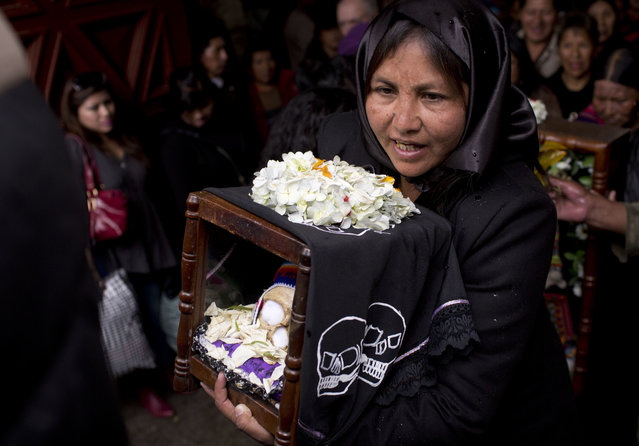
A woman carries a decorated human skull or “natitas”, after a blessing by the priest inside the Cementerio General chapel, during the Natitas Festival celebrations, in La Paz, Bolivia, Tuesday, November 8, 2016. The “natitas” are cared for and decorated by faithful who use them as amulets believing they serve as protection, the tradition marks the end of the Catholic All Saints holiday, but is not recognized by the Catholic church. (Photo by Juan Karita/AP Photo)
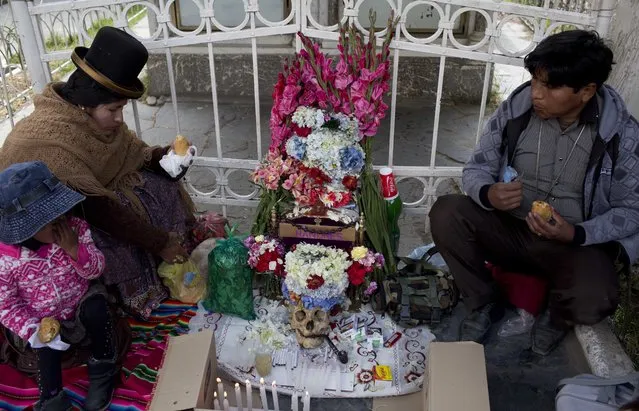
A couple sits with a decorated human skull or “natitas”, during the Natitas Festival celebrations, in La Paz, Bolivia, Tuesday, November 8, 2016. (Photo by Juan Karita/AP Photo)

A woman carries three decorated human skull or “natitas”, as she waits to be greeted by the priest inside the Cementerio General chapel, during the Natitas Festival celebrations, in La Paz, Bolivia, Tuesday, November 8, 2016. (Photo by Juan Karita/AP Photo)
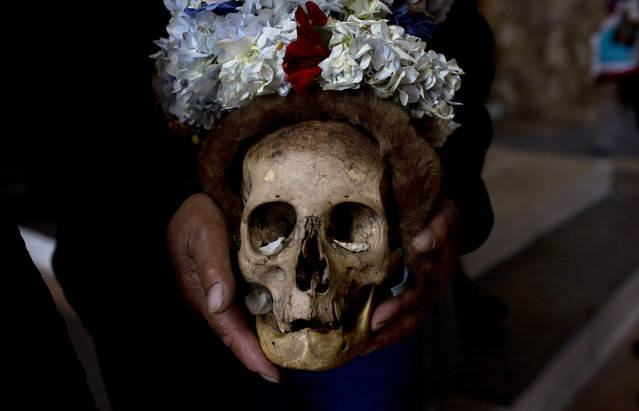
A man holds a decorated human skull or “natitas”, after a blessing by the priest inside the Cementerio General chapel, during the Natitas Festival celebrations, in La Paz, Bolivia, Tuesday, November 8, 2016. (Photo by Juan Karita/AP Photo)
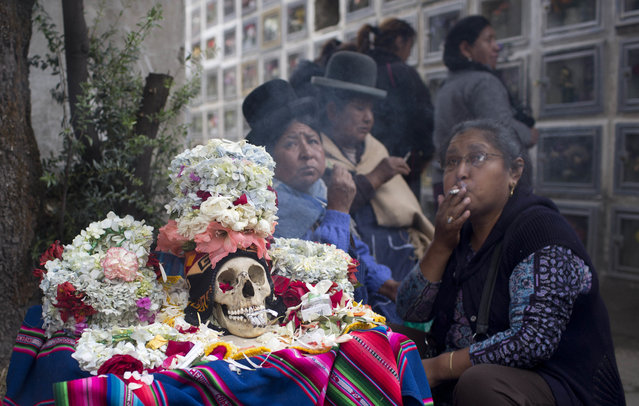
Women sit with a decorated human skull or “natitas”, during the Natitas Festival celebrations, in La Paz, Bolivia, Tuesday, November 8, 2016. (Photo by Juan Karita/AP Photo)

A decorated human skull or “natitas”, is illuminated by candlelight during the Natitas Festival celebrations, in La Paz, Bolivia, Tuesday, November 8, 2016. (Photo by Juan Karita/AP Photo)

People hold their decorated human skulls or “natita”, after the greeting by the priest inside the Cementerio General chapel during the Natitas Festival celebrations, in La Paz, Bolivia, Tuesday, November 8, 2016. (Photo by Juan Karita/AP Photo)
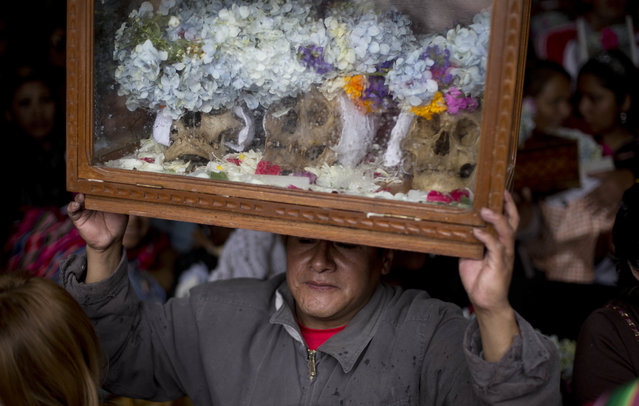
A man balances a wooden framed glass case on head containing decorated human skulls or “natitas”, inside the cementerio General chapel during the Natitas Festival celebrations in La Paz, Bolivia, Tuesday, November 8, 2016. (Photo by Juan Karita/AP Photo)
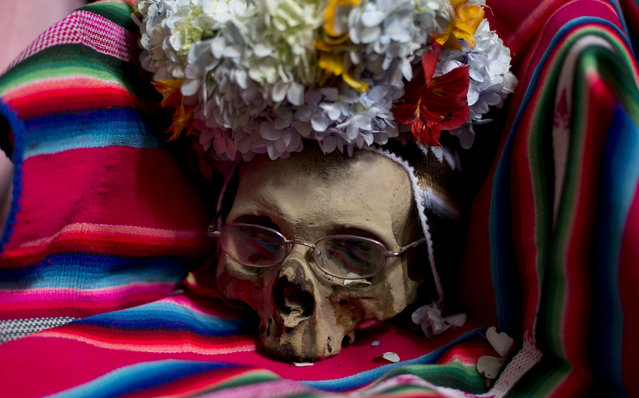
A decorated human skull or “natitas”, sits on a blanket inside the Cementerio General chapel, during the Natitas Festival celebrations, in La Paz, Bolivia, Tuesday, November 8, 2016. (Photo by Juan Karita/AP Photo)

A human skull or “natitas” wearing sun glasses, is displayed outside the Cementerio General chapel during the Natitas Festival celebrations, in La Paz, Bolivia, Tuesday, November 8, 2016. (Photo by Juan Karita/AP Photo)
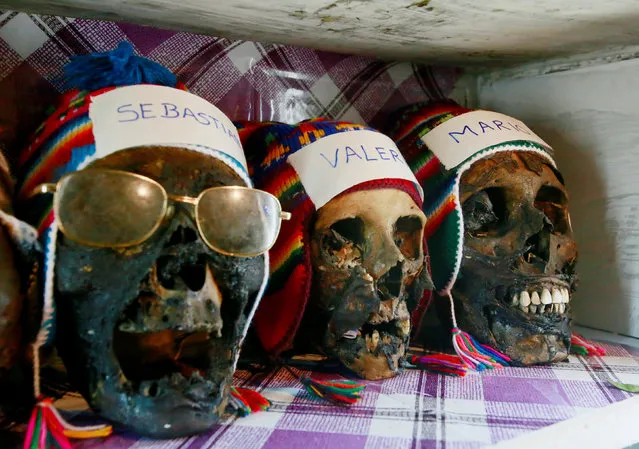
Skulls are seen at a witch doctor workplace before the celebrations of The Day of Skulls in El Alto, on the outskirts of La Paz, Bolivia, November 7, 2016.Picture taken November 7, 2016. (Photo by David Mercado/Reuters)
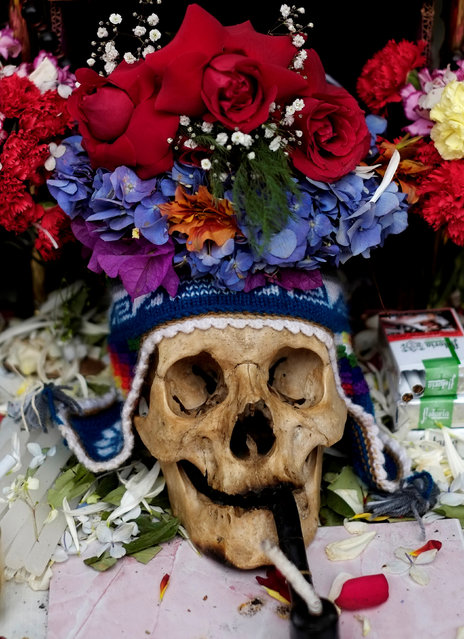
A skull is seen at a cemetery during the Day of Skulls in La Paz, Bolivia, November 8, 2016. (Photo by David Mercado/Reuters)
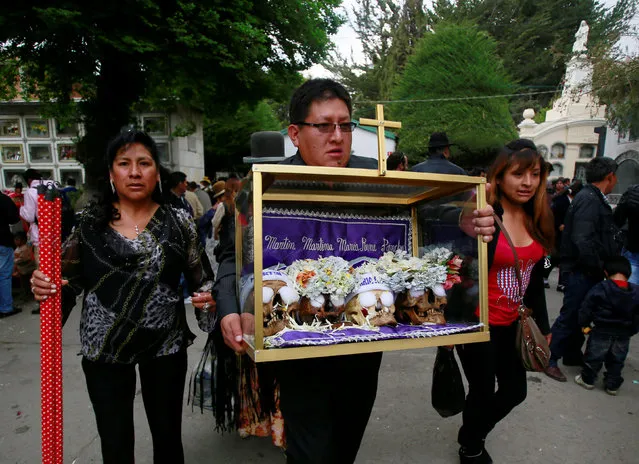
Devotes with skulls arrive for a mass during the Day of Skulls in La Paz, Bolivia, November 8, 2016. (Photo by David Mercado/Reuters)
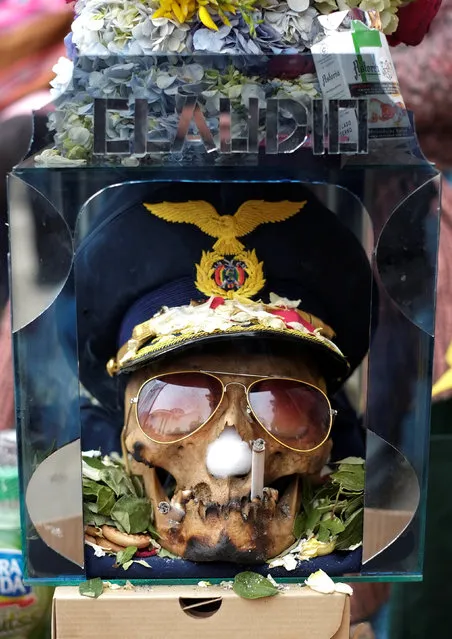
A skull is seen at a cemetery during the Day of Skulls in La Paz, Bolivia, November 8, 2016. (Photo by David Mercado/Reuters)
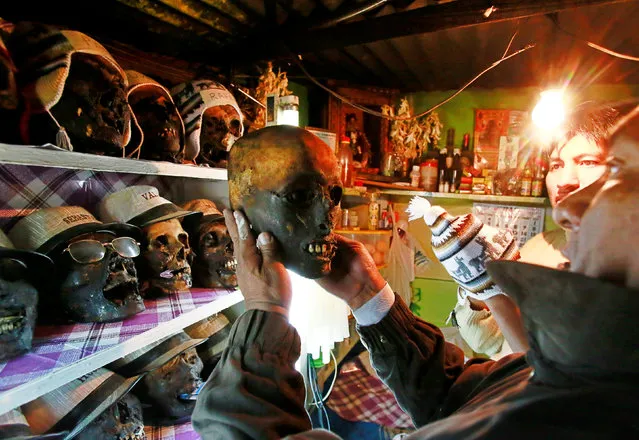
A devote holds a skull before the celebrations of The Day of Skulls in El Alto, on the outskirts of La Paz, Bolivia, November 7, 2016. (Photo by David Mercado/Reuters)

A devote holds a skull before the celebrations of The Day of Skulls in El Alto, on the outskirts of La Paz, Bolivia, November 7, 2016. (Photo by David Mercado/Reuters)
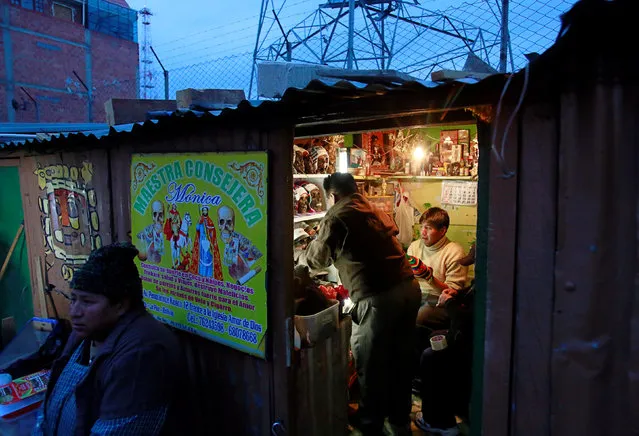
Devotees visit the skulls at a witch doctor workplace before the celebrations of The Day of Skulls in El Alto, on the outskirts of La Paz, Bolivia, November 7, 2016. (Photo by David Mercado/Reuters)
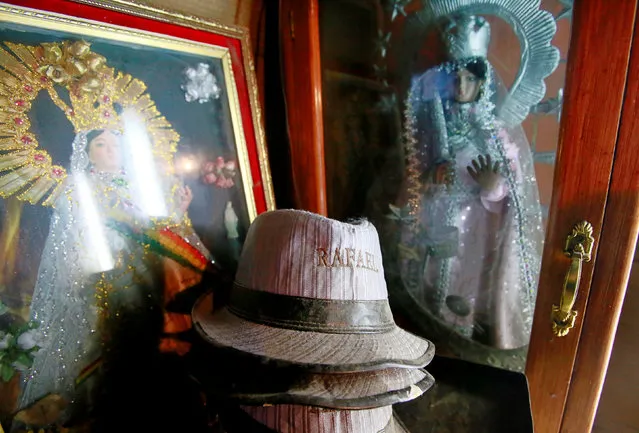
Hats of skulls are seen before the celebrations of The Day of Skulls in El Alto, on the outskirts of La Paz, Bolivia, November 7, 2016. (Photo by David Mercado/Reuters)
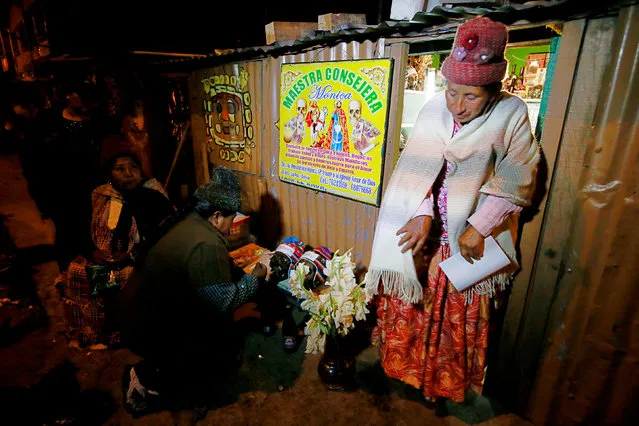
Devotees visit skulls before the celebrations of The Day of Skulls in El Alto, on the outskirts of La Paz, Bolivia, November 7, 2016. (Photo by David Mercado/Reuters)
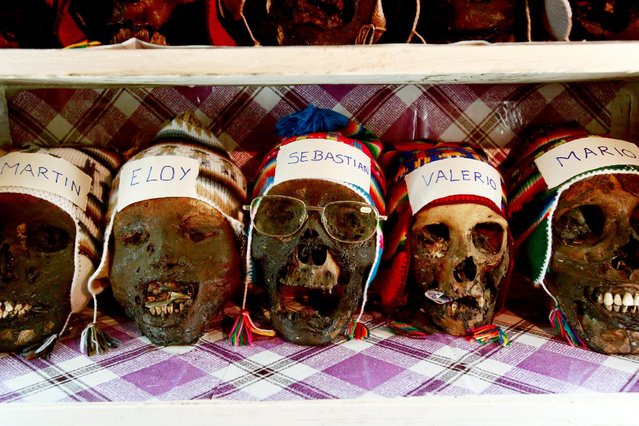
Skulls are seen at a witch doctor workplace before the celebrations of The Day of Skulls in El Alto, on the outskirts of La Paz, Bolivia, November 7, 2016. (Photo by David Mercado/Reuters)
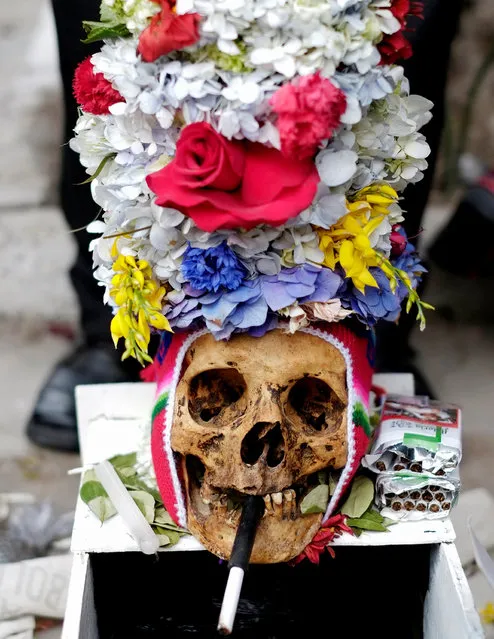
A skull is seen at a cemetery during the Day of Skulls in La Paz, Bolivia, November 8, 2016. (Photo by David Mercado/Reuters)
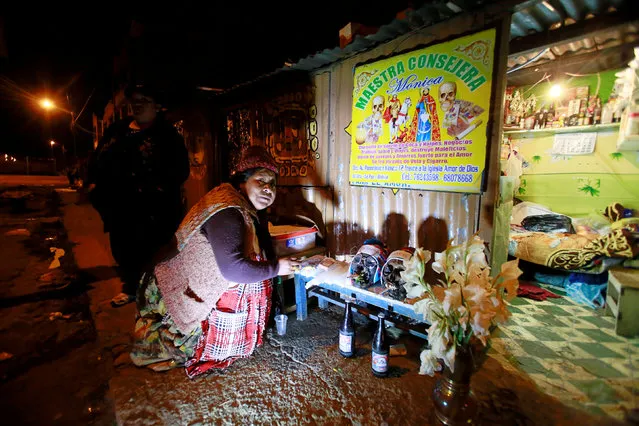
A witch doctor pays honor to skulls before the celebrations of The Day of Skulls in El Alto, on the outskirts of La Paz, Bolivia, November 7, 2016. (Photo by David Mercado/Reuters)
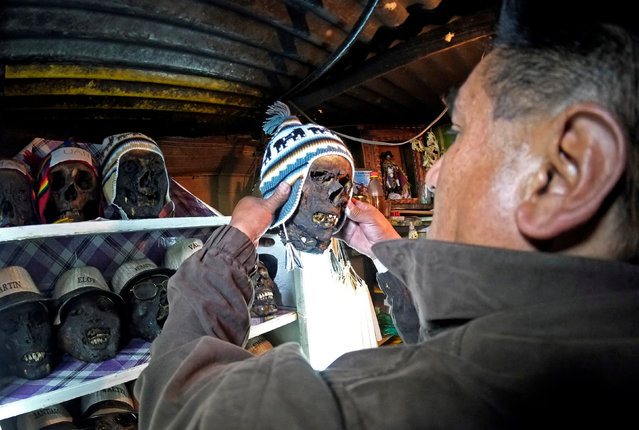
A devotee holds a skull before the celebrations of The Day of Skulls in El Alto, on the outskirts of La Paz, Bolivia, November 7, 2016. (Photo by David Mercado/Reuters)

A witch doctor holds a skull at her work place before the celebrations of The Day of Skulls in El Alto, on the outskirts of La Paz, Bolivia, November 7, 2016. (Photo by David Mercado/Reuters)
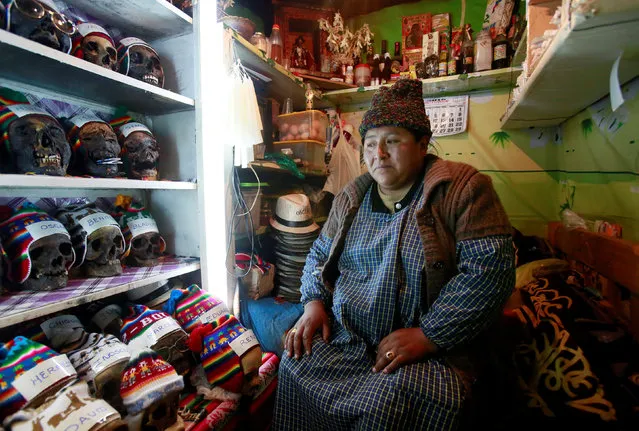
A witch doctor sits with skulls before the celebrations of The Day of Skulls in El Alto, on the outskirts of La Paz, Bolivia, November 7, 2016. (Photo by David Mercado/Reuters)
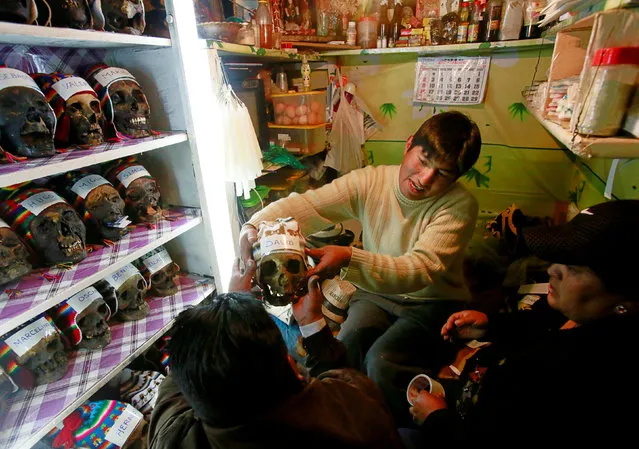
A devotee holds a skull before the celebrations of The Day of Skulls in El Alto, on the outskirts of La Paz, Bolivia, November 7, 2016. (Photo by David Mercado/Reuters)
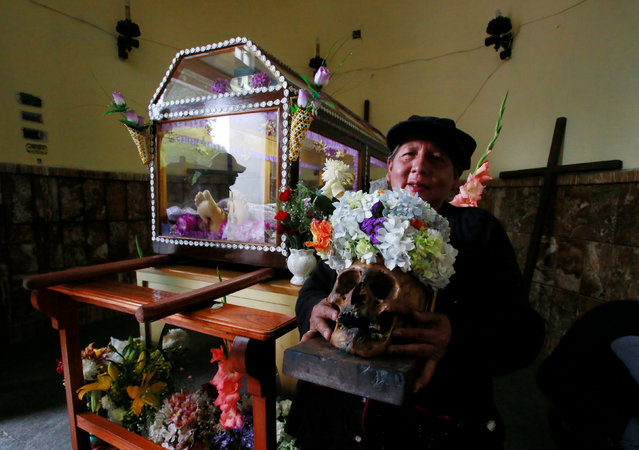
A woman waits for a mass during the Day of Skulls in La Paz, Bolivia, November 8, 2016. (Photo by David Mercado/Reuters)
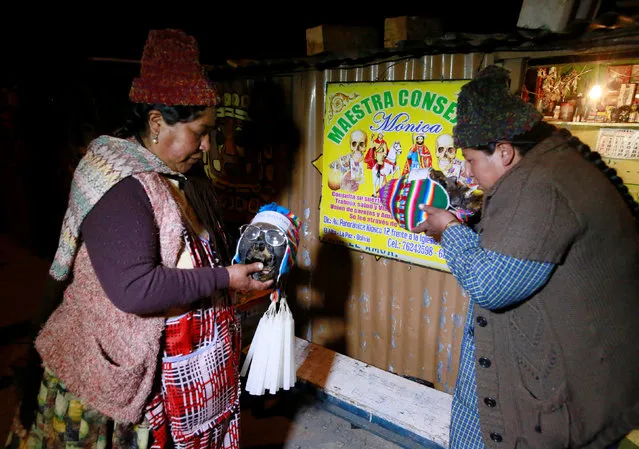
Witch doctors pay honour to their skulls before the celebrations of The Day of Skulls in El Alto, on the outskirts of La Paz, Bolivia, November 7, 2016. (Photo by David Mercado/Reuters)
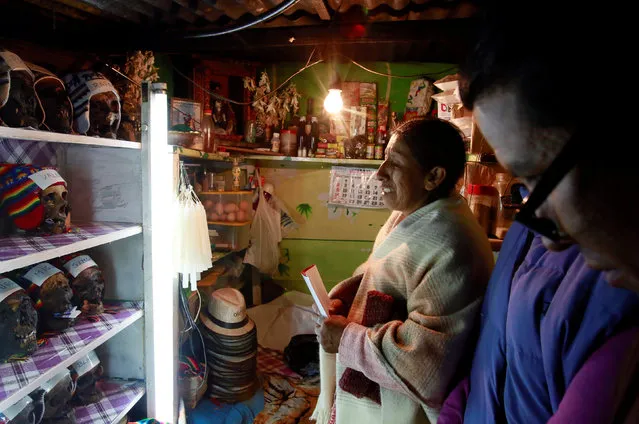
Devotees pray to skulls before the celebrations of The Day of Skulls in El Alto, on the outskirts of La Paz, Bolivia, November 7, 2016. (Photo by David Mercado/Reuters)

A witch doctor sits with skulls before the celebrations of The Day of Skulls in El Alto, on the outskirts of La Paz, Bolivia, November 7, 2016. (Photo by David Mercado/Reuters)
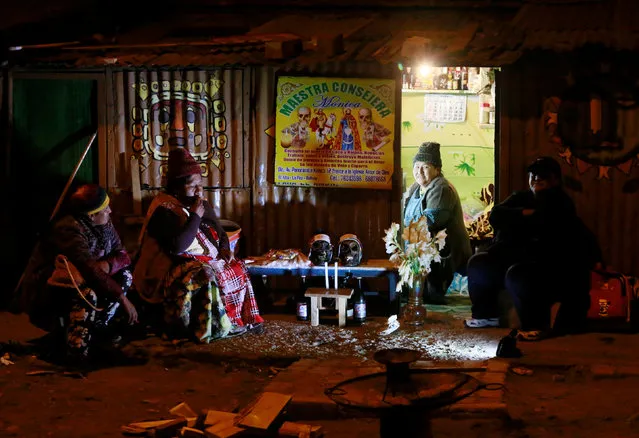
Witch doctors make a vigil before the celebrations of The Day of Skulls in El Alto, on the outskirts of La Paz, Bolivia, November 7, 2016. (Photo by David Mercado/Reuters)
09 Nov 2016 06:25:00,
post received
0 comments
